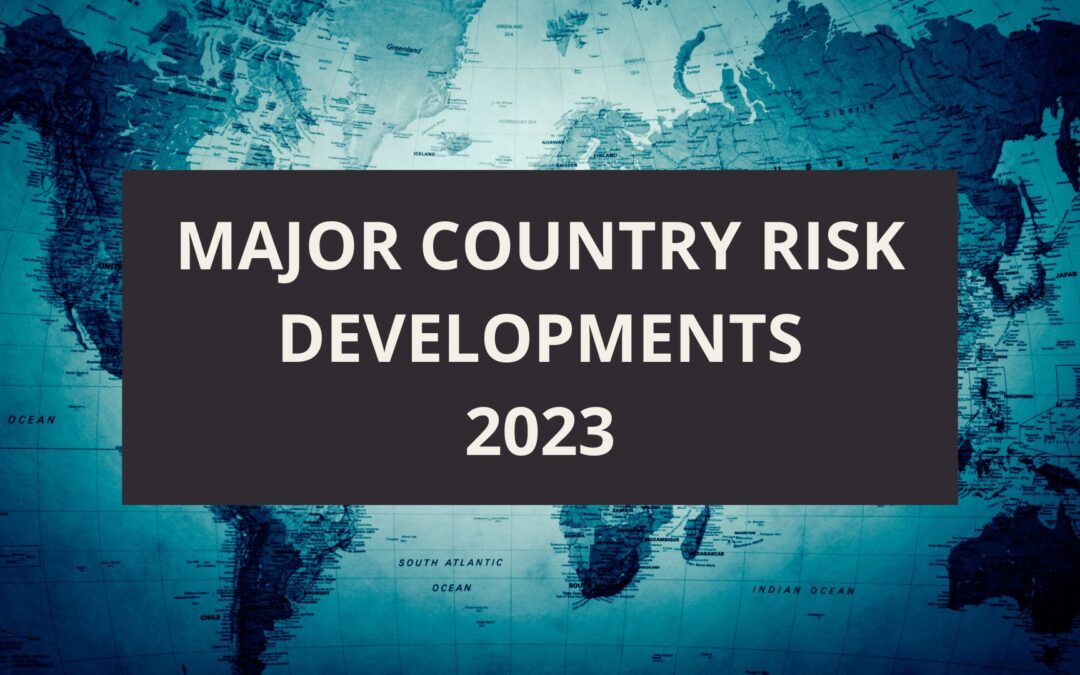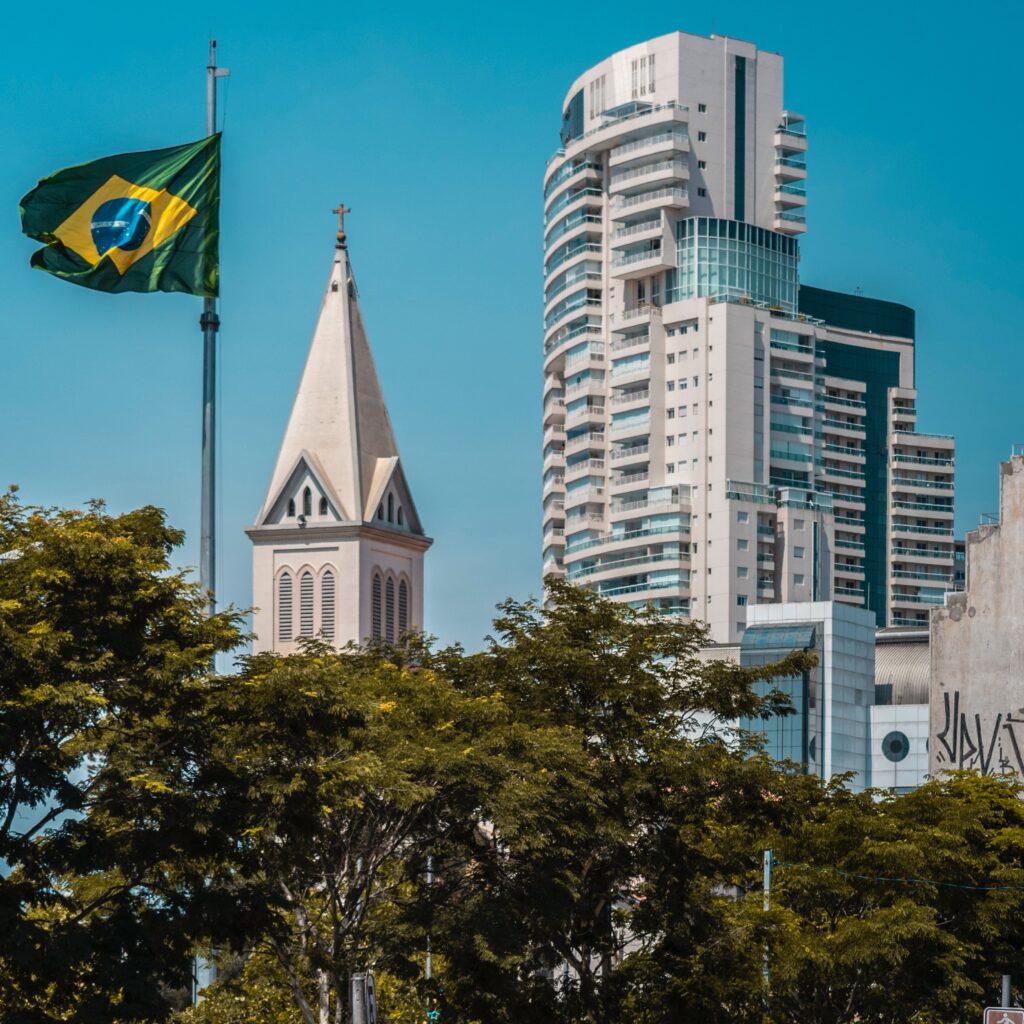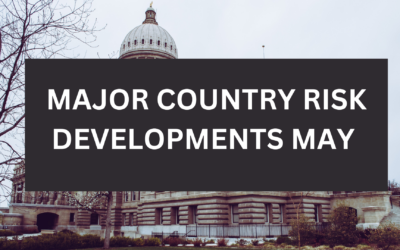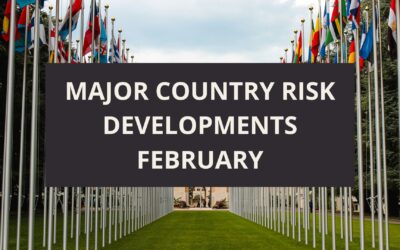Overview
The global economy faces several uncertainties in 2023, the most prominent being: are we in a recession, and if so, how steep, or widespread will it be? According to the International Monetary Fund, one-third of all countries around the world will likely experience a recession beginning in 2023. The IMF also believes the global economy still has some ways to go before policymakers and central bankers can ease back on the current monetary tightening cycle – meaning further interest rate increases in 2023. Inflationary pressures remain elevated, however there are recent signs that some pressures have cooled – as energy and commodity prices pull back from recent highs. Many believe the current economic slowdown can remain just a slowdown. Others believe that a recession, will in all likelihood, be narrow and short-lived; while others are bracing for a steep contraction this year, given continued weak global demand, higher borrowing costs and rising debt service costs – which is contributing to the more gloomy outlook.
U.S. Federal Reserve (Fed) officials warned they will need to see substantially more evidence of inflation easing before they are convinced that price pressures are under control. Minutes of the Fed’s December 2022 meeting, when the central bank raised its benchmark rate by half a percentage point, showed that the Fed intends to continue squeezing the economy to try to tackle price pressures, which they believe could prove more persistent than anticipated. December’s half-point rise ended a months-long string of 0.75 percentage point increases and lifted the target range of the federal funds rate to between 4.25% and 4.5%. The decision in December followed fresh evidence that inflation appeared to have peaked as energy prices and those tied to the goods sector have retreated. U.S. GDP growth is set to slow as borrowing costs are kept high for an extended period, with most Fed officials projecting growth of just 0.5% this year before a 1.6% rebound in 2024.
U.S. unemployment currently at 3.6% is projected to increase by nearly a full percentage point during 2023. So far, the Fed’s tightening has been felt most in interest-sensitive sectors such as housing, where prices have declined dramatically from their pandemic peaks. However, labor demand remains high as consumers continue to spend, helping to further entrench inflationary pressures that have taken hold across the services sector.
Meanwhile, with unusually mild temperatures so far this winter in Europe and the United States, energy costs seem likely to be less of a strain on households and businesses -than previously feared.
Also, global grain prices have retreated in recent months after recording record highs in 2022 as the war in Ukraine stifled supply -as did dry weather in many crop-growing areas. Now, grain prices have fallen close to where they were at the start of 2022. The recent decline is consistent with an overall easing of commodity prices including natural gas, cotton, lumber, and crude oil. Weaker global demand, and China’s current downturn has contributed to price declines and will likely help prevent significant price spikes in the months ahead. More interest rate boosts by the Fed and other central banks aimed at cooling economy activity in the year ahead, when taken together with China’s slowdown, has the potential to birth a recession.
The outlook for global grain availability and pricing will remain uncertain, partly because so much hinges on the outcome of the war in Ukraine – which shows no sign of an early conclusion. Despite a fragile deal allowing some Ukrainian grain exports to go forward, the level of exports are far below pre-war highs. That arrangement remains shaky and will require ongoing monitoring. Future Ukraine grain planting, harvesting and access to global markets is not guaranteed. Whether western sanctions imposed on Russian exports have had a substantial impact on its foreign exchange earnings and it ability to wage the ongoing war – is unclear.
Going forward Russia believes it can survive sanctions and western economic war by using the global marketplace to its advantage. China, India, Turkey, and oil markets continue to buy and sell hugely discounted Russian crude and other exports since and during the war. Russian energy exports that previously flowed to Europe will now head to India, China, and Turkey. U.S. energy exports will flow to Europe and shipments from the Middle East may plug gaps in both directions. How this new system performs, whether the sanctions regime works and who will step in- to trade more Russian energy, will drive prices over the next twelve months and potentially for years to come. Last year’s energy crisis revived fears about energy security, presenting an opportunity for industry groups to argue in favor of continued investment in oil and gas during the period of transition from fossil fuels. The sources of energy – of all sorts- needs further diversification, new finds, and greater investment commitments for the coming decades.
On balance, it now appears that energy prices will remain volatile but mostly manageable this year, given the need for countries to refill national reserves drawn down to help combat OPEC production cut, will keep energy demand consistent this year, even without robust global economic activity. During this period of uncertainty, producers will need to keep sufficient reliable suppliers available, while consuming nations will need to ensure that sufficient reserves are kept on hand.
Western nations have placed a price cap of $60 per barrel on Russian crude exports, a move meant to crimp Russia’s ability to spend on the war. Russia has refused to sell its crude or petroleum products to countries endorsing the price cap imposed by the western alliance. The market for crude remains brisk, and during these periods of global tension, sanctions avoidance has become an art form for Russian exporters.
Movements in crude prices influence agricultural prices because demand for U.S. and Brazilian corn and soybeans stems in part from renewables fuels. Corn, for example, is the key ingredient for producing ethanol; while soybean oil is a vegetable used for the production of biofuels. Higher crude oil prices make producing such fuels more attractive, thus stimulating demand for the underlying grain. Many analysts are betting that prices for grain and other commodities could likely slip in 2023, at the height of a possible recession, with continued monetary tightening in major economies.
However, farmers and the agricultural sector are contending with higher operational costs, including for fertilizers and farm equipment. That could keep grain prices elevated in 2023. Grains tend to trade at or near their cost of production, but historically seldom trade below production cost. Prices for fertilizer components such as urea have pulled back from record highs in 2022 but remain well above the five-year average. Prices for natural gas, another raw material for fertilizer, have fallen sharply over the past month, but they are also up from a year ago.
A change in the financial climate has already hit the technology sector, letting the air out of the bubble in growth stocks. This could be compounded if an economic downturn follows in 2023, turning a sharp valuation adjustment into a broad-based rout in the tech industry. Many tech companies have already been struggling to deal with the aftermath of the recent boom, by cutting workers and paring back investments. An economic crunch that also hit demand for their products and services would force many companies to much deeper cuts and threaten the post-covid hangover into an outright tech depression.
The real estate and construction sectors are recalibrating as the long era of cheap money, which has drawn so many new investors into those sectors since the financial crisis, comes to a halt. Owners of offices, shops, warehouses around the world were still figuring out what impact the pandemic has had on their tenants when they were hit by rising interest rates in 2022. Higher borrowing costs, inflation and the threat of recession will push some landlords to the brink in 2023, and the expectation is that forced sales will begin in earnest within the first half of the year, as property owners have to refinance loans at far higher rates or sell assets to meet redemption requests from investors.
Global economic growth is forecast to slow from 6% in 2021 to 3.1% in 2022 and 2.7% in 2023. This is the weakest growth profile since 2001 and during the acute phase of the Covid-19 pandemic.
Eurozone
A resilient Germany is weathering the energy crunch. German inflation slowed more than expected in December, sliding into single digits for the first time since last summer and providing some relief for the European Central Bank [ECB] in its battle to control price increases. Consumer price inflation fell to 9.6% in December, well down on the 11.3% registered in November.
The eurozone’s largest economy is the latest country to experience a sharper than expected fall in price pressures. The German number, down from a seven-decade peak of 11.6% in October – follows a sharp fall in inflation in Spain and may ease pressure on the ECB, which will next meet to set rates on February 2, 2023.
Together, the German and Spanish figures suggest eurozone inflation could drop lower than the 9.7% forecast by economists. According to the Institute of International Finance, a trade body for global finance, the fall in inflation means that the peak of ECB hawkishness is behind us. Headline inflation in Germany seems to have reached its peak and unless there is another large surge in energy prices, double digit inflation numbers should be gone for some time. However, some caution is appropriate as the nature of the sharp decline is in part driven by the government’s gas price support subsidies. Nonetheless, the ECB is still on course to raise rates a few more times this year.
German headline inflation is still likely to continue to decline further in the months ahead. Separate data from the German Labor Office showed unemployment declined to 5.5%. The robustness of the country’s labor market is expected to bolster the ECB’s view that the eurozone recession is set to be shallow and that underlying price pressures remain too strong to stop the tightening cycle at this time.
European natural gas prices have fallen to levels last recorded before the Russian invasion of Ukraine last February, as warmer weather helps to preserve reserves.
The Dutch gas futures for January, the benchmark European contract, dropped to its lowest levels in ten months. Russia’s weaponizing of the commodities it sells to Europe, combined with record-breaking temperatures, helped push gas prices to more than $500 per metric unit over the summer. In an effort to stem prices, the EU has implemented a series of measures including mandatory gas storage and consumption reduction targets.
The latest price decline comes from warmer than usual temperatures across north-west Europe, which are expected to linger for a while. As the warm weather reduces heating demand, Europe has been able to build up its gas inventory again after drawdowns from mid-November, including during cold snaps in December.
Since Christmas Eve, Europe has been sending more gas into its storage facilities than it has taken out of them, with storage levels increasing. Capacity stood at 82.2% as of year-end, down from the mid-November high of 95.6% , according to the industry body, Gas Infrastructure Europe. The current level is 30% higher than the same period last year, when Europe had unusually low levels of storage, and about 10% higher than the average of the previous five years. Reduced demand for gas has also helped inventories, with the region cutting its requirements by about a quarter compared with the five-year average.
Analysts warn that Europe will be in a difficult position when trying to restock its gas inventory next winter, when the volume of gas supplied from Russian pipelines will be considerably lower and liquified natural gas market, which the region has depended on this year, remains tight.
Weakened demand in China, the world’s leading grain consumer, will likely affect the outlook for agricultural futures in 2023. With the Chinese authorities having now reversed previous Covid lockdown protocols, Chinese companies, factories, and traders are seeking to step up economic activity. However, that could take months. The consensus is for an economic turnaround in China to pick-up pace late in 2023, once the current outbreak of the Omicron variant has subsided.
In a change of course, China’s pandemic controls that included relentless lockdowns, mass testing, quarantine and electronic contact tracing have been rapidly dismantled. The toll those policies had on the economy are many. Meanwhile, the sudden abandonment of the zero-Covid playbook has led to an alarming spike in new Covid-19 infections and, according to some forecasts, could lead to millions of deaths over the winter. For the next several months the impact on Chinese growth will be negative, the impact on the region will be negative and the impact on global growth will also be negative, according to the IMF.
Before the recent sudden reopening of society, Chinese doctors and nurses warned that the country was unprepared for a new Covid wave, given thinly resourced hospitals and medical clinics, and nearly 90 million Chinese aged 60 and over – who had not received three vaccine doses. Now, China’s healthcare system is being overwhelmed with a deluge of sick patients, and funeral providers are unable to keep up with demand for their services.
Beyond the immediate health crisis, which could persist for months, the true extent of the damage wrought upon Chinese society by the Administration’s zero-covid policies is only just emerging. For large swaths of the 1.4 billion population, the pandemic shattered the fragile balance that once supported the back-and-forth movement of people from rural areas to cities. Zero-covid’s vast web of intersecting restrictions hammered low-income families, and in some cases, left people cut-off from their loved ones.
As the restrictions have been unwound, it is becoming clear that the pandemic’s scars are deepest among youngsters in rural areas, experts say. Rising inequality, which is heavily influenced by access to education, could in the coming years carry repercussions for the Chinese leadership and the ruling Chinese Communist Party. In addition, China’s youth unemployment rate has been near-record levels and the brunt of the impact is shouldered by those born to poorer households. At the height of the nationwide lockdowns in 2020, the UN estimated that 1.5 billion school children globally were affected by school closures, a third of which did not have access to remote learning facilities. However, the problem facing China’s 291 million students stand out because of just how long Beijing persisted in using lockdowns to try to contain the virus. Weak test results show how much learning has deteriorated among students in rural provinces. Teachers in China report a decline in the quality of students’ ability overall since the pandemic.
One negative effect that is little discussed but may have longer-term implications is education. as it has sharpened China’s already high levels of social inequality, especially between urban and rural residents. Many young people from rural areas or the urban lower classes have been forced to study online and have been separated from their parents for long periods over the past three years. The result is that their education -hitherto their only path to upward mobility- hangs in the balance.
Despite the dangers inherent in public displays of dissent, frustrations among younger Chinese and opposition to the policies of the current rulers, have become increasingly evident in recent months. The sudden reversal in China’s Covid lockdown policies, came on the heels of recent national street protests and demonstrations. An Australian think-tank has tracked more than 100 protests and acts of public resistance across 39 cities across China. Some Chinese experts believe that the legacy of the 2022 protests will go far beyond the zero-Covid policy reversal. The current period marks a turning point for a generation who have no memory or knowledge of the 1989 Tiananmen democracy movement. Prior to the protests, Chinese citizens had largely complied with the zero-Covid policy as citizens under any authoritarian system would. However, last year’s protests showed that not all Chinese people feel the authorities are infallible, and some are daring to dissent for the first time. Other experts point to the credibility of President Xi Jinping’s being badly wounded as Covid death toll mounts. There is also a sense of exhaustion among much of China’s middle class, dashing hopes of an economic recovery based on pent-up consumer demand. Despite official forecasts promoting an early economic turnaround, some economists refuse from ruling out a long phase of stagnation to hit the Chinese economy. This remains the biggest uncertainty for many observers.
The transition back to normal life is proving difficult. There is a sense of euphoria that restrictions are being lifted but fears remain. Central shopping districts in many big cities appear empty during the day. Over the three-day public holiday around January 1st, the number of domestic trips was barely higher than a year earlier, and less than 45% of the pre-pandemic figure. At cinemas, sales were down nearly 46%. However, reports of a pick-up in nightlife is encouraging with images of packed bars and crowds of new year revelers in cities across the country have circulated on Chinese social media. While the disease spreads, it will be hard to keep production lines running and haulage trucks on the road. Covid is also ripping through factory towns and causing serious disruption. Local governments and company managers are battling high infection rates on factory floors. In late December suppliers in major exporting provinces such as Guangdong, Zhejiang, Shandong, and Jiangsu faced severe delays. Many home appliance makers, for example, were operating at 20%-50% capacity.
Another worry is that workers could be forced to quit to take care of elderly family members living far from the factories. As China proceeds with its flash exit from zero-covid, manufacturing hubs could experience some short-term shocks to labor supply, as workers head home earlier than expected for their Chinese New Year break. They may also delay their return.
Local government intervention may also pose a risk to business. Some executives worry that as cases surge, officials could begin to seal off their towns. Even within towns, traffic from one district to another might be restricted. That would interrupt the connectivity that makes Chinese cities so efficient for manufacturers. Predicting how long such disruptions may last is difficult.
Egypt
The Egyptian pound plunged to a record low early in the New Year, the latest sign of the country’s severe foreign currency crunch, two months after agreeing to a $3 billion rescue loan from the IMF. This is the fourth time in six years that Egypt has had to resort to the IMF.
The currency fell 6% to 26.4 to the U.S. dollar – the steepest slide since the Central Bank of Egypt (CBE) in late October devalued the pound in an effort to clinch the IMF deal. The recent slide comes as billions of dollars of imports are blocked in Egyptian ports because local banks are unable to secure enough dollars to pay for them due to the shortage of foreign currency. This has left importers stranded for badly needed parts, manufacturing inputs, raw materials, consumer goods, etc.
Russia’s invasion of Ukraine in February 2022 spurred outflows of $20 billion from Egypt- in a flight to safety by foreign debt investors. The war also caused prices of raw materials to soar, dealing a powerful blow to Egypt, the world’s biggest importer of wheat. In an effort to conserve foreign currency, the CBE placed restrictions on imports last March. The requirement to use letters of credit, or Documentary Credit, slowed the process and created a backlog of unfulfilled demand for dollars. It also prioritized access, placing basic commodities such as food staples and medicines at the top of the list.
The new IMF pact includes a requirement that Egypt implement a permanent shift to a flexible exchange rate regime instead of using foreign currency reserves to keep the exchange rate at a targeted level. This way, market forces would determine the currency’s value- something Egyptian governments have long resisted. The CBE devalued the pound in March 2022, and then again in October, with the currency losing 40% of its value against the dollar over the period. The two devaluations reduced the pound from around 16:U.S.$1, to 24.7:U.S.$1. The CBE increased interest rates by 300 basis points on December 22, taking the overnight deposit rate to 16.25%. The rise surprised expectations and reflects increasing concern about inflation, the falling pound, as well as the need for Egypt to attract foreign portfolio investors back (with these higher interest rates).
It is unclear if the recent fall in the currency exchange rate in early January, represented the expected move to a flexible exchange rate regime. To determine that, we will need to monitor the level at which the currency will eventually stabilize, the extent to which this will lead to improved foreign currency liquidity in banks and if we see more volatility in the pound going forward.
Last year, the CBE revoked the need for importers to use letters of credit, a measure that was initially introduced in March in order to conserve scarce foreign currency resources by slowing down the import process. Successive Egyptian governments have been reluctant to move to a flexible exchange rate to avoid big jumps in prices in a country reliant on imports for many of its basic needs. But the scarcity of foreign currency in recent months and the emergence of a parallel market in dollars had already stoked inflation to 18.7% in November, its highest level in five years.
In December, the CBE boosted interest by three percentage points in an attempt to cool down inflation. State-owned banks early in January began offering one-year deposit certificates at a 25% interest rate- a move aimed at enticing savers to hold on to their Egyptian pounds rather than convert them to dollars.
Businesses from poultry farmers to car manufacturers have been badly hit in a country that imports most of its food and many of the inputs for its industries. As policymakers ponder when and how to move to a flexible exchange rate regime where the value of the pound is not propped by the CBE, entrepreneurs complain they have no visibility on the future.
Importers will be watching to see if dollars will be available to clear the backlog of imports stuck in ports, which equated to about $9.5 billion, this according to the Prime Minister. These include goods ranging from corn and soya, used as animal feed, to cars, industrial inputs, and household appliances. Importers in a variety of sectors were all caught up in the predicament: how to secure foreign exchange to pay for necessary inputs needed to run their businesses. Car parts, corn, soya, among other essential goods, remain stuck at the ports. Some poultry farmers have had to kill chicks. The result a substantially lower supply of chickens being sold causing prices to increase more than 50% last year. That example is applicable across a variety of sectors in Egypt.
Despite $13 billion in deposits from the United Arab Emirates, Saudi Arabia, and Qatar and another $3.3 billion in asset sales to the UAE in 2022, foreign currency has remained in desperately short supply for this import-dependent country. In late December President Abdel Fattah al-Sisi commented that banks would secure foreign exchange necessary to clear the backlog of imports within four days. He didn’t say from what source.
Concerns have lingered about the Egyptian authorities commitment to a flexible exchange rate, but developments over the past week suggest that they may be moving in the right direction. However, Cairo based investment bankers stress that the shift to a flexible exchange rate system cannot happen overnight. Instead, the authorities need to first build up a buffer of foreign currency to help clear the backlog of demand, before moving on the exchange rate.
As policymakers weigh the options, the outlook for many Egyptian businesses is uncertain. One multinational auto components company suggested that his business had fared better in the environment than most it was also an exporter, giving it access to foreign currency. However, those reserves are being depleted and the company is now unsure whether to accept new orders. The company is unsure if it will be able to clear imported inputs for a new order and have to pay thousands in holding fees as it waits for dollars from the banking system.
Brazil
Brazil’s fortunes have risen and fallen since Lula da Silva [Lula] was last president. As President once again (effective January 1, 2023) Lula has a daunting task ahead because of Brazil’s many economic challenges. Big pre-election spending helped boost GDP growth last year 2.9%. But growth is expected fall to 1% in 2023. Meanwhile, inflation is down from a peak of 12% in April to 6% in November. However, the share of Brazilians who do not get enough to eat has risen from 6% four years ago to 16% today.
The outgoing Bolsonaro administration succeeded in putting the state pensions system on a sounder footing; but failed to realize many of his promised liberal economic reforms. Inflation has helped to reduce the burden of government debt, by swelling the size of national income. But high inflation has also pushed up the government borrowing costs and eroded confidence in long-run macroeconomic stability. This leaves the new Lula government with less room to maneuver in dealing with the federal debt burden, which at 75% of GDP, remains uncomfortably high.
The resulting fiscal crunch will complicate Lula’s ambitious policy plans and the speed with which he hopes to enact them. He wants to revamp various social policies started under his earlier administrations. These include a conditional cash-transfer scheme known as Family Fund, a subsidized-housing initiative, and a program to provide jobs and upgrade Brazil’s shoddy infrastructure.
Lula also plans to reduce illegal deforestation of the Amazon. The pace of tree clearing in the Amazon rose 60% under former President Bolsonaro as officials turned a blind eye to illegal logging, mining, and land grabbing. Among Lula’s first decrees upon taking office were ones to restructure environmental bodies gutted by his predecessor, reverse plans to legalizing wildcat mining in protected areas and reactivate the Amazon Fund, by which Norway and Germany help pay for environmental policing and sustainable-development projects.
Lula has had to scramble to fill a hole in the budget for 2023 of the order of 1.7% of GDP. By rallying support in Congress for a constitutional amendment to exclude roughly that amount from a federal spending cap. Lula’s amendment passed. This was not easy, despite his reputation as a skilled negotiator. Lula’s Workers Party (PT) has a minority position of just 12 seats in congress.
Faster growth than Brazil’s lackluster 0.5% annual average of the past decade is crucial to fund social programs on the new governments platform. Financial markets will not be tolerant with leftist-like overreach or state interventionism that undercuts private initiatives, stifles competition or the ability of markets to function relatively free. Brazil’s economic turn around will depend on such assurances.
The new Lula administration is off to a bumpy start with supporters of former President Bolsonaro having violently attacked the parliament and supreme court and rioted against police trying to protect these institutions. Opposition forces has sent a clear message that its tactics won’t be limited to debates in Congress.
Nigeria
The end of 2022 coincides with the twilight of President Muhammadu Buhari’s second term in Nigeria. After coming to power seven years ago promising to rein in corruption, create jobs, and alleviate poverty, its hard to find evidence that much has changed.
While GDP growth was officially reported at 3.1% in 2022, inflation at 16% at the beginning of 2022 rose to a peak of 21.5% in November. Meanwhile, food inflation consistently outpaced headline and core inflation during the year. For the basket of goods consumed by the average Nigerian, costs accelerated by between 50% to 100% in 2022. According to the World Bank [WB] approximately five million Nigerians were pushed into poverty in 2022 amid a slump of purchasing power by 35% driven mostly by inflation.
The impact of inflation squeeze on small and medium sized enterprises (SME’s) was also devastating. The foreign exchange challenge was a major restraint for investors and importers in Nigeria during 2022. Sharp currency depreciation, foreign exchange illiquidity, especially at the official window; volatility of the exchange rate, created considerable uncertainty and unpredictability for importers, investors and widened transparency issues in the FX allocation system. According to the WB, while the official exchange rate depreciated by 5.2% in 2022, the parallel market rate depreciated by 40%. The WB concluded that Nigeria’s exchange rate policy settings are stifling business activities, investment, and growth, thereby amplifying the country’s macroeconomic risks.
Foreign exchange reserves were down at $36.97 billion at yearend 2022 from $40.04 billion in December 2021. The decline was due to lower prices, sub-optimal oil production and the central bank’s futile efforts to support the currency. The FX reserves are unlikely to increase over the short-term due to the country’s inability to benefit from high oil prices due to oil theft as well as the central bank’s efforts to stabilize the Nigerian naira. Rationing and restrictions in the foreign exchange market by the central bank and further widen the gap between the official exchange rate and the parallel market rate as demand pressure rises.
While GDP growth is projected at 2.9% for 2023 the FX situation is unlikely to improve much this year. Shipping is crucial to the Nigerian economy and the need for reforms have become urgent. These include the pressing priority of reducing delays in clearing cargo from arriving vessels, removing bureaucracy and red tape, curbing extortions in the clearance of vessels. The aim is to reduce vessel turnaround time from the current 20+ days to less than one week.
Last year the central bank launched a scheme to attract $200 billion in foreign exchange repatriation from non-oil exports over the next three years. The scheme emerged out of the need to diversify Nigeria’s export earnings from oil while addressing declining FX earnings. The central bank admits that, so far, its efforts recorded 44.98 billion in FX inflows. Cocoa beans, sesamum seeds, cashew, and seven others top the list of agricultural commodities Nigeria exported in 2022, generating $1.7 billion in revenue in nine months, according to latest data from the National Bureau of Statistics. On a year-on-year basis, the value of the top agricultural exports increased 14.9% in 2022 over 2021.
To unlock growth and investment in 2023, the government will be forced to undertake some urgent reforms. The enactment of the Petroleum Industry Act (PIA) promises to transform the oil sector through the creation of a legal and regulatory framework meant to inspire higher levels of investors’ confidence. However, Nigeria needs to demonstrate a greater commitment to the implementation of the PIA. For example, the deregulation of the petroleum downstream sector is a major economic reform imperative that markets are expecting; and which would indicate a good faith commitment to changes in the business climate. This will be an important first step to unlock investment in the sector and put an end to the perennial fuel scarcity and the monopolistic structure of the sector over generations.
There is also a need to consolidate reform in the ailing power generation sector. Businesses and households alike continue to highlight the need to enable and create an environment that will sustain private sector investment in the sector; and attract new private capital to boost electric generating capacity. This has become a national rallying cry. Urgent reforms are needed with respect to electricity tariffs, metering and deepening the energy mix. Nigeria needs fiscal and monetary incentives to boost private investment in renewable energy. It must seek every opportunity to achieve this goal in the not too distant future.
Uruguay
This country’s president Luis Lacalle Pou has been hard at work negotiating new trade deals outside the regional trade block since taking office in March 2020. Mr. Lacalle Pou’s ambitions are running up against other Mercosur members who are closing ranks on Uruguay, as political alliances shift in the region. The Uruguayan president has decided to “open up to the world” under his pro-business platform.
The tensions of such a move were on display in December at the Mercosur summit held in the Uruguayan capital Montevideo. There were accusations of foul play and unsportsmanlike tactics on news that Uruguay has independently applied to join the Trans-Pacific Partnership [TPP], the 11-member trade alliance including Australia and Japan. This followed separate bilateral trade talks with China and Turkey earlier last year.
The Argentine Foreign Minister admonished Uruguay to choose if its with Mercosur. The Argentine’s claim that any member of Mercosur determines something without consensus, it is breaking the fundamental rules of Mercosur. Together with Argentina, Brazil, and Paraguay, Uruguay makes up the Mercosur partnership, a three-decades-old customs union in which no individual country is allowed to negotiate preferential agreements with third parties.
Many trade observers have described the protectionist alliance of Mercosur as one of the least effective of its kind anywhere in the world, both in terms of trade among its members and with external partners. It has also struggled to finalize a free trade agreement with the EU, a process that is entering its 24th year.
Those delays and frustrations are among the factors driving Uruguay’s mission to explore opening up to foreign markets on its own. According to president Lacalle Pou Mercosur can no longer lead with an early 1990’s mindset or pull back on any member’s economic progress.
Chile, Colombia, Peru, and Mexico have all been looking towards the Pacific to expand trade with Asia. All have joined the TPP, with the exception of Colombia, while Mercosur has stalled.
The other three Mercosur member states have called for regional unity, threatening to penalize Uruguay with a series of undisclosed measures if it continues to pursue commercial arrangements alone. Critics regard the threats as bullying against a smaller country because it has triggered real discussions about restructuring the alliance, which could ultimately lead to a break-up. Argentina and Brazil account for nearly 90% of the trade block’s GDP, giving them more influence in negotiations. Some say the bigger countries simply use Mercosur as a trade shield, to protect their industries from global competition.
Uruguay maintains that the country wants to modernize, not cut away from the block, that represented roughly a third of overall Uruguayan trade in 2022.
The president has defended his nation’s actions., arguing that a decision to lower the common external tariff applied to goods from outside the block in September 2022, between Brazil and Argentina was made without consensus among partners. Recently the Uruguay-China chamber of Commerce reiterated its support for the steps taken by the Uruguayan government to deepen trade relations between the two countries, saying that advancing the Free Trade Agreement with China was central to their strategy.
Outgoing Brazilian leader Jair Bolsonaro pledged support for Uruguay’s attempts to make Mercosur more flexible. However, Bolsonaro successor Lula may have other ideas. Lula has already emphasized that greater Latin American integration and multilateralism will be critical to his administration’s foreign policy. Lula’s new term in office marks the first time in four years that the biggest members of Mercosur, Brazil, and Argentina, are politically aligned under the direction of leftist leaders.
Uruguay’s move to go ahead with its own international deals was a risky given the heightened political uncertainty. They don’t know what Brazil will do under Lula. And what Brasilia says matters more that Argentina. Because of Uruguay’s diplomatic power many do not believe the country will be thrown out of Mercosur or penalized.
Lula is himself strongly in favor of bolstering trade, in particular with China, which remains Brazil’s biggest buyer. In Lula’s previous two terms as president in the early 2000’s, Brazil became a member of the BRIC’s block with Russia, India, and China, which became an important tool for global cooperation. It is now up to Lacalle to convince Lula to lead the China negotiations for Mercosur.
By Byron Shoulton, FCIA’s International Economist For questions / comments please contact Byron at bshoulton@fcia.com
Since 2004, Securitas Global Risk Solutions, LLC (“Securitas”) has helped clients develop credit and political risk transfer solutions that provides value on numerous levels. As an independent trade credit and political risk insurance brokerage, Securitas is focused on developing comprehensive solutions that meet the needs of clients, ensuring complete understanding of policy wording and delivering excellent responsive service.
Recommended News
Major Country Risk Developments May 2023
Posted with permission from greatamericaninsurancegroup.com Overview There appears to be developments on the...
Top 5 Benefits of Trade Credit Insurance
How does trade credit insurance work? Trade credit insurance is a type of insurance that protects businesses from the...
Major Country Risk Developments, February
Posted with permission from greatamericaninsurancegroup.com Overview Federal Reserve has dialed back on the pace of...








